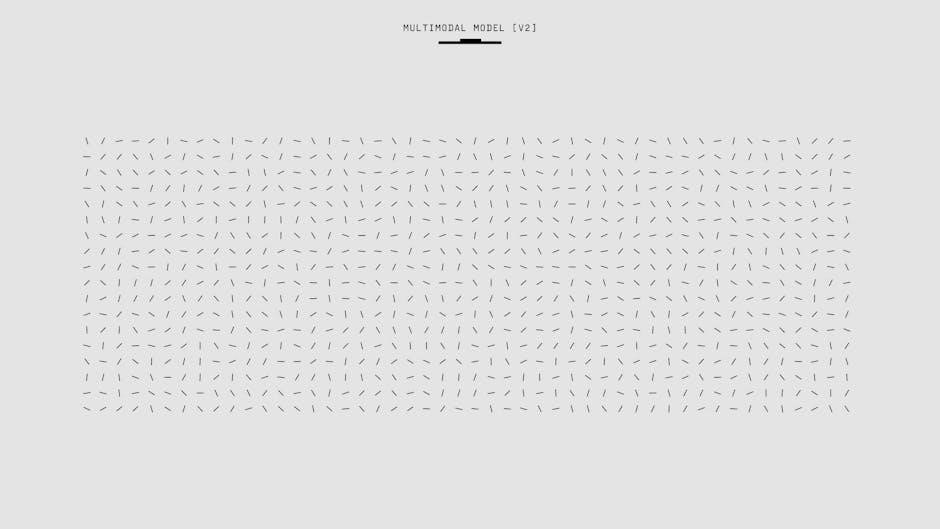Volume 2 provides an in-depth guide to system design interviews, focusing on scaling strategies, optimization, and real-world applications. It offers practical frameworks for solving complex design problems.
Overview of the Book
System Design Interview: An Insider’s Guide, Volume 2 is a comprehensive resource for engineers preparing for system design interviews. Building on the foundation of Volume 1, this book delves deeper into scaling strategies, system optimization, and identifying bottlenecks. It provides a step-by-step framework for tackling design questions and includes real-world examples to illustrate systematic approaches. The book is designed for both beginners and experienced professionals, offering practical insights into designing robust and scalable systems. Available in PDF format, Volume 2 is a valuable tool for mastering advanced system design concepts and trade-offs, ensuring readers are well-prepared for challenging interviews in the tech industry.
Importance of System Design Interviews
System design interviews are pivotal in assessing a candidate’s ability to design scalable, efficient, and robust systems. They evaluate problem-solving skills, understanding of trade-offs, and the capacity to handle real-world challenges. Volume 2 emphasizes these aspects, offering insights into advanced concepts like proximity services and fault tolerance. By mastering these topics, engineers can demonstrate their readiness for complex roles in tech. The book serves as a bridge between theory and practice, providing frameworks and examples that help prepare for high-stakes interviews. Its focus on practical applications ensures that readers gain the expertise needed to excel in system design, making it an indispensable resource for career advancement.

Key Topics Covered in Volume 2
Volume 2 focuses on scaling strategies, system optimization, bottleneck identification, and trade-off analysis, providing advanced techniques for designing robust and scalable systems efficiently.
Scaling Strategies and System Optimization
Volume 2 delves into advanced scaling techniques and optimization methods, ensuring systems handle growth efficiently. It explores distributed systems, load balancing, and caching strategies to enhance performance. The book provides frameworks for identifying bottlenecks early and optimizing resource utilization. Practical examples illustrate how to apply these strategies in real-world scenarios, while emphasizing the importance of trade-offs in system design. Readers gain insights into scaling databases, microservices, and cloud-based architectures, preparing them to tackle complex interview questions with confidence. This section is crucial for understanding how to build systems that scale seamlessly and perform optimally under varying workloads.
Designing Robust and Scalable Systems
Volume 2 emphasizes designing systems that are both robust and scalable, focusing on fault tolerance and high availability. It provides step-by-step approaches to building systems that can handle failures gracefully and scale with demand. The book covers essential concepts like microservices architecture, distributed databases, and fault-tolerant design patterns. Real-world examples help illustrate how these principles are applied in large-scale systems. Additionally, the guide offers strategies for balancing consistency, availability, and partition tolerance in distributed systems. By mastering these concepts, readers can design systems that are resilient, efficient, and capable of meeting the demands of modern applications.
Identifying Bottlenecks and Trade-offs
Volume 2 delves into identifying bottlenecks and evaluating trade-offs in system design. It provides a systematic approach to detecting performance issues and guiding trade-off discussions. The book includes real-world examples to illustrate how bottlenecks emerge and how to mitigate them. Readers learn how to balance scalability, latency, and cost while designing systems. The guide emphasizes understanding the implications of design choices and offers practical frameworks for making informed decisions. By mastering these techniques, engineers can design systems that are efficient, reliable, and adaptable to changing demands. This section is crucial for preparing for interviews, where identifying trade-offs is a key skill.

The Structure of the Book
The book is organized into chapters covering key topics like scaling strategies, system optimization, and real-world applications, with practical examples to enhance understanding and application.
Chapter Breakdown and Content Organization
The book is structured into well-organized chapters, each focusing on specific aspects of system design. It begins with foundational concepts, progressing to advanced topics like scalability and optimization. Chapters are divided into sections covering real-world examples, practical solutions, and step-by-step frameworks. The content is logically arranged to build knowledge gradually, ensuring readers grasp both theory and application. Topics such as proximity services, fault tolerance, and microservices are explored in depth, supported by case studies and diagrams. The book also includes a dedicated section on common interview mistakes, offering actionable advice to improve performance. This clear organization makes it an invaluable resource for interview preparation.
Practical Examples and Real-World Applications
Volume 2 enriches learning with numerous real-world examples, illustrating how theoretical concepts apply in actual scenarios. Case studies from leading tech companies demonstrate system design challenges and solutions. Topics include designing scalable e-commerce platforms, optimizing database systems, and implementing microservices architecture. Each example is accompanied by step-by-step explanations, highlighting trade-offs and best practices. Readers gain insights into tackling issues like high availability and fault tolerance through practical exercises. These examples bridge the gap between theory and practice, preparing candidates for real-world system design interviews. The inclusion of industry-specific applications ensures the content is relevant and applicable across various domains. This approach makes the book a valuable tool for hands-on learning and professional growth.

System Design Fundamentals
Master essential concepts like distributed systems, microservices, and scalability. Learn to identify bottlenecks and make informed trade-offs in system design.
Understanding Distributed Systems
Distributed systems are crucial in modern computing, enabling multiple nodes to collaborate over networks. Understanding their architecture is vital for designing scalable and fault-tolerant systems. Key concepts include communication models, consistency, and handling failures. These systems allow for resource sharing and enhance reliability, making them fundamental in cloud computing and big data. Grasping these principles is essential for system design interviews, as they form the backbone of many applications and require careful consideration of trade-offs and bottlenecks.
Microservices Architecture and Its Implications
Microservices architecture breaks down systems into loosely coupled, independently deployable components, enhancing scalability and modularity. Each service handles specific tasks, enabling teams to work autonomously. This approach fosters fault isolation, reducing the impact of failures. However, it introduces complexity in communication, data consistency, and system management. The book explores these trade-offs, offering insights into designing microservices effectively. It emphasizes the importance of APIs, service discovery, and distributed tracing. By mastering microservices, developers can build resilient, adaptable systems that meet modern demands, aligning with the practical frameworks and real-world examples provided in Volume 2.

Advanced Concepts in System Design
Exploring proximity services, location-based systems, and advanced optimization techniques for complex architectures, this section dives into cutting-edge strategies for modern system design challenges and opportunities.
Proximity Services and Location-Based Systems
Proximity services and location-based systems are explored in depth, focusing on designing efficient architectures for real-time applications. Key considerations include data accuracy, latency, and user privacy. Practical examples, such as Google Maps, illustrate how these systems handle large-scale geolocation data. The book provides strategies for optimizing proximity-based queries and ensuring high availability. Readers learn how to balance performance and scalability while addressing challenges like network overhead and data consistency. These insights are crucial for building modern, location-aware applications that deliver seamless user experiences. Volume 2 offers actionable frameworks for tackling these complex design challenges effectively.
Designing for High Availability and Fault Tolerance
Designing systems for high availability and fault tolerance is a critical focus, ensuring minimal downtime and robust performance under failures. The book outlines strategies like redundancy, load balancing, and failover mechanisms. It explores how distributed systems can recover gracefully from node failures and network partitions. Practical examples demonstrate the implementation of circuit breakers and bulkhead patterns. Readers learn to identify single points of failure and mitigate risks through thoughtful system architecture. These concepts are vital for building resilient systems capable of handling real-world challenges, making this section indispensable for interview preparation and professional growth in system design.

Preparation Strategies for Interviews
Mastering system design interviews requires a structured approach, focusing on scalability, trade-offs, and real-world examples. Practice breaking down problems systematically to build confidence and clarity in solutions.
A 4-Step Framework for Solving Design Questions
The book introduces a structured 4-step framework to tackle system design problems: understanding requirements, designing a high-level architecture, identifying bottlenecks, and optimizing for scalability and performance. This method ensures clarity and efficiency, helping candidates address complex challenges systematically. Real-world examples illustrate each step, making the approach practical and applicable. By mastering this framework, interviewees can confidently break down problems, articulate solutions, and demonstrate their ability to design robust systems. This systematic approach is a key feature of Volume 2, equipping readers with tools to excel in technical interviews.

Common Mistakes to Avoid in System Design Interviews
Volume 2 highlights common pitfalls in system design interviews, such as overlooking scalability, neglecting trade-offs, and failing to communicate clearly. It emphasizes avoiding premature optimization and ensuring design aligns with requirements. The book provides actionable advice to help candidates steer clear of these errors, fostering better problem-solving and communication skills. By addressing these mistakes, interviewees can present more polished and effective solutions, significantly improving their chances of success in technical interviews. This section serves as a valuable guide for refining interview strategies and delivering standout performances.

Resources and Downloads
Volume 2 PDF is available on platforms like Project Gutenberg and Open Library, offering free access to the book. Additional materials include sample chapters and guides.
Where to Find the PDF Version of Volume 2
The PDF version of System Design Interview: An Insider’s Guide, Volume 2 can be accessed through various online platforms. Popular options include Project Gutenberg, which offers over 60,000 free eBooks, and Open Library, with its vast collection of over 1 million eBooks. Additionally, platforms like GitHub and Byte Code host downloadable versions of the book. Some websites provide early access to the PDF, allowing readers to preview the content online. Ensure to verify the authenticity of the source before downloading to avoid unauthorized versions.
Additional Materials and Supplements
Supplemental resources for System Design Interview: An Insider’s Guide, Volume 2 include downloadable PDFs, chapter breakdowns, and practical examples. The book’s companion website offers exercises, case studies, and interactive tools to enhance learning. Readers can also access video lectures and Q&A forums for deeper insights. Additionally, the authors provide design templates and checklists to streamline the problem-solving process. These materials are designed to complement the book’s content, ensuring a comprehensive understanding of system design principles and their real-world applications. They are available through verified online platforms, offering readers additional support beyond the core text.

Author Insights and Expert Opinions
Alex Xu and Sahn Lam share expert strategies for mastering system design interviews, offering practical frameworks and real-world insights to help candidates excel in technical interviews.
Alex Xu and Sahn Lam’s Approach to System Design
Alex Xu and Sahn Lam’s approach to system design emphasizes a structured, 4-step framework for tackling interview questions. Their method focuses on identifying bottlenecks, understanding scalability, and balancing trade-offs. By breaking down complex problems into manageable components, they provide clear strategies for designing robust systems. Their insights highlight the importance of real-world applications, offering practical examples to illustrate systematic thinking. This approach not only equips candidates with technical skills but also instills confidence in presenting solutions during interviews. Their collaborative expertise ensures a comprehensive understanding of modern system design challenges and solutions.
Industry Feedback and Reviews of the Book
Industry professionals and engineers have praised System Design Interview Volume 2 for its practical insights and comprehensive approach. Many reviewers highlight its ability to bridge theory with real-world applications, making it indispensable for interview preparation; Hiring managers and tech leaders appreciate the book’s focus on scalability, bottlenecks, and design trade-offs, which are critical in modern system design. The structured framework and step-by-step problem-solving methods have been particularly praised for their clarity and effectiveness. Aspiring engineers and experienced professionals alike have credited the book with enhancing their problem-solving skills and confidence during interviews. Its reputation as a go-to resource continues to grow in the tech community.

System Design Interview Volume 2 is a comprehensive guide that equips engineers with the skills to master system design. Its practical insights and real-world examples make it invaluable for interview success.
Final Thoughts on the Book’s Value
System Design Interview Volume 2 stands out as a must-have resource for engineers preparing for technical interviews. It builds on foundational concepts from Volume 1, offering advanced strategies for scaling systems, identifying bottlenecks, and making informed design trade-offs. The book’s structured approach, combined with real-world examples, provides readers with a clear framework to tackle complex design challenges. Authors Alex Xu and Sahn Lam’s expertise shines through, making it a valuable tool for both beginners and experienced professionals. By focusing on practical applications and industry-tested methodologies, Volume 2 bridges the gap between theory and practice, ensuring engineers are well-equipped to excel in system design interviews.
How Volume 2 Complements Volume 1
While Volume 1 lays the groundwork for system design fundamentals, Volume 2 expands on these concepts with advanced techniques and practical insights. It delves deeper into scaling strategies, bottleneck identification, and trade-off analysis, offering a comprehensive approach to designing robust systems. The step-by-step frameworks and real-world examples in Volume 2 build upon the foundational knowledge from Volume 1, creating a cohesive learning experience. Together, the volumes provide a complete toolkit for engineers to master system design interviews, ensuring a smooth progression from basic to advanced topics. This complementary structure makes the two volumes indispensable for anyone aiming to excel in technical interviews.
